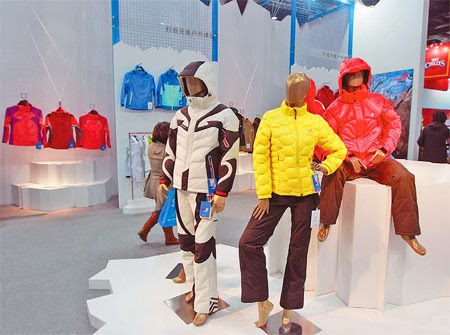"The trend indicates that low-cost production enjoyed by the country two decades ago is now history and it is no longer profitable for many manufacturers, both international and Chinese, who are moving away from China in search of greener pastures. In addition to rising wages and energy costs, higher logistics costs and government quotas on imported cotton are other major reasons why manufacturers are exploring other destinations"

China’s demand as the textile manufacturing hub is waning as Chinese workers are asking for a hike in wages and thus, local manufacturers are finding ways to combat the current challenges. Higher pay, a stronger currency and Beijing’s desire to become a more automated, and high-tech society are all pushing clothing manufacturers/exporters to find new sources.
A leader despite odds

Domestic Chinese manufacturers are combating rising production and labour costs in the textile and apparel industry, which has also led to the country losing its status as the mass producer of goods. China’s costs have risen so quickly and to the extent that importing countries are moving to many other Southeast Asian countries such as Malaysia, the Philippines, Indonesia and Vietnam that offer low production and labour costs.
However, while China imports textile and apparel products from Bangladesh, Pakistan and other countries, its textile and apparel exports continue enjoy the number one status in global foreign trade, with China’s biggest markets the United States, the European Union and Japan. Also, many Southeast Asian exporters import China-made fabrics and re-export them after further processing. Last year, China processed approximately 10 million tons of cotton, 60 per cent of which was grown locally. The remainder was imported from countries including the United States, India, and Pakistan.
However, recent CCPIT data reveals China’s total export value of textiles and apparel from January 2015 to May 2015 was $30 billion, with the United States accounting for some $16.4 billion in this period. By contrast, in 2014, the total export value of textiles and apparel amounted to roughly $300 billion. And while the US market is showcasing much more resilience, the European Union’s and Japan continue to lag behind as far as economic recovery is concerned.
Focus on new export, production destinations
Amid slowing demand from the US, EU and other traditionally strong importing countries, Chinese players are now exploring newer export destinations such as South America, including Brazil, Africa and Russia. Sighting continuous rise in labour and production costs, manufacturers from China are also moving their production to places like South Carolina in the United States, where they are buying out mills to set up manufacturing base. The trend indicates that low-cost production enjoyed by the country two decades ago is now history and it is no longer profitable for many manufacturers, both international and Chinese, who are moving away from China in search of greener pastures. In addition to rising wages and energy costs, higher logistics costs and government quotas on imported cotton are other major reasons why manufacturers are exploring other destinations.
While labour and production costs are equally high in America, much lower energy prices, competitive prices of cotton, tax incentives from local governments and a considerable reduction in shipping costs since supply is closer to home are luring Chinese players to set up a shop in the US. And Chinese yarn manufacturers with US operations want to ship yarn to apparel manufacturers in Mexico, Central America and the Caribbean — countries that have duty-free access to the American market under NAFTA and CAFTA.












